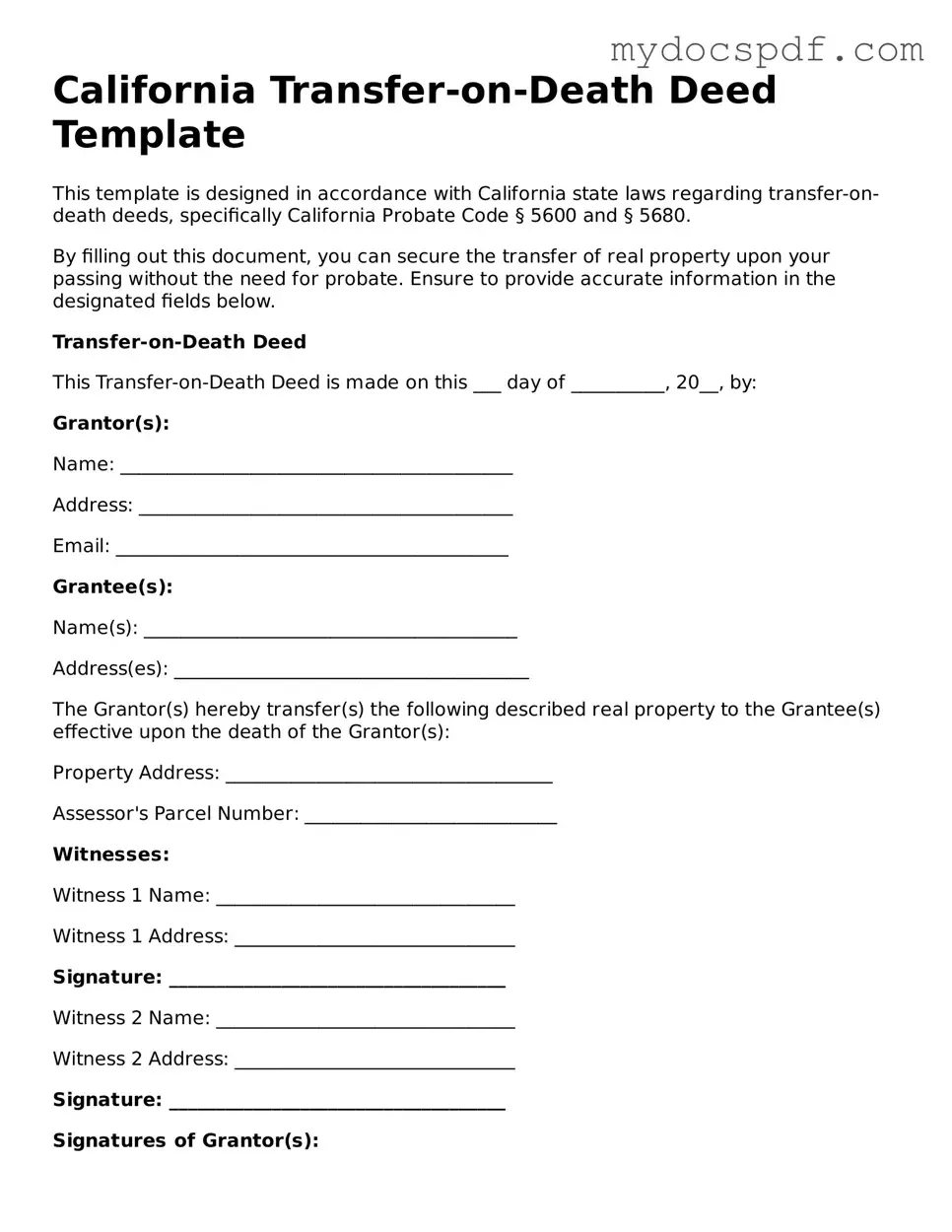California Transfer-on-Death Deed Template
This template is designed in accordance with California state laws regarding transfer-on-death deeds, specifically California Probate Code § 5600 and § 5680.
By filling out this document, you can secure the transfer of real property upon your passing without the need for probate. Ensure to provide accurate information in the designated fields below.
Transfer-on-Death Deed
This Transfer-on-Death Deed is made on this ___ day of __________, 20__, by:
Grantor(s):
Name: __________________________________________
Address: ________________________________________
Email: __________________________________________
Grantee(s):
Name(s): ________________________________________
Address(es): ______________________________________
The Grantor(s) hereby transfer(s) the following described real property to the Grantee(s) effective upon the death of the Grantor(s):
Property Address: ___________________________________
Assessor's Parcel Number: ___________________________
Witnesses:
Witness 1 Name: ________________________________
Witness 1 Address: ______________________________
Signature: ____________________________________
Witness 2 Name: ________________________________
Witness 2 Address: ______________________________
Signature: ____________________________________
Signatures of Grantor(s):
Grantor Signature: _________________________________
Co-Grantor Signature (if any): _____________________
This deed must be recorded in the county where the property is located within 60 days after it is executed in order to be effective.
Notice:
- This deed revokes any prior transfer-on-death deed for the same property.
- The Grantee(s) shall take the property subject to any liens or encumbrances.
By executing this deed, the Grantor(s) confirm that they have read and understood the implications of this Transfer-on-Death Deed.
